1. Introduction
2507 Super Duplex Stainless Steel, designated as UNS S32750 or EN 1.4410, is a high-performance alloy known for its exceptional combination of strength, corrosion resistance, and toughness.
Classified as a super duplex stainless steel, it features a two-phase microstructure of austenite and ferrite in nearly equal proportions, providing superior properties over conventional stainless steels and even standard duplex grades like 2205.
The alloy is engineered to perform in highly corrosive, high-stress environments, making it indispensable in offshore oil & gas platforms, desalination plants, and aggressive chemical processing environments.
This article delves into the chemical, mechanical, physical, and metallurgical aspects of 2507, offering a professional and data-backed perspective.
2. What is 2507 Super Duplex Stainless Steel?
2507 is a super duplex stainless steel alloy primarily composed of 25% chromium, 7% nickel, and 4% molybdenum, with additions of nitrogen.
It is designed to offer enhanced resistance to chloride-induced corrosion, excellent mechanical strength, and thermal stability.
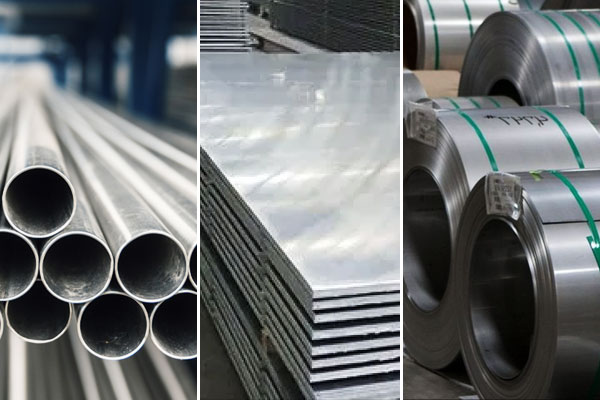
Chemical Composition (% typical):
| Element | Typical (%) | Function |
| Chromium (Cr) | 24.0 – 26.0 | Increases general and localized corrosion resistance |
| Nickel (Ni) | 6.0 – 8.0 | Stabilizes austenite, improves toughness and weldability |
| Molybdenum (Mo) | 3.0 – 5.0 | Enhances pitting and crevice corrosion resistance |
| Nitrogen (N) | 0.24 – 0.32 | Strengthens alloy and increases resistance to SCC |
| Carbon (C) | ≤ 0.03 | Minimizes carbide precipitation and intergranular corrosion |
| Manganese (Mn) | ≤ 1.2 | Aids deoxidation and improves hot-working |
| Silicon (Si) | ≤ 0.8 | Enhances oxidation resistance |
| Phosphorus (P) | ≤ 0.035 | Kept low to prevent embrittlement |
| Sulfur (S) | ≤ 0.020 | Controlled for improved ductility and toughness |
3. Physical Properties of 2507 Super Duplex Stainless Steel
| Property | Value |
| Density | 7.8 g/cm³ |
| Melting Range | 1350 – 1400 °C |
| Thermal Conductivity | ~18 W/m·K at 100 °C |
| Specific Heat | 500 J/kg·K |
| Elastic Modulus | ~200 GPa |
| Coefficient of Thermal Expansion | 13 µm/m·K (20–100 °C) |
| Magnetic | Slightly magnetic due to ferritic phase |
4. Mechanical Properties of 2507 Super Duplex Stainless Steel
2507 Super Duplex Stainless Steel (UNS S32750) is engineered to offer exceptional mechanical strength—often double that of standard austenitic stainless steels—while maintaining excellent ductility and impact resistance.
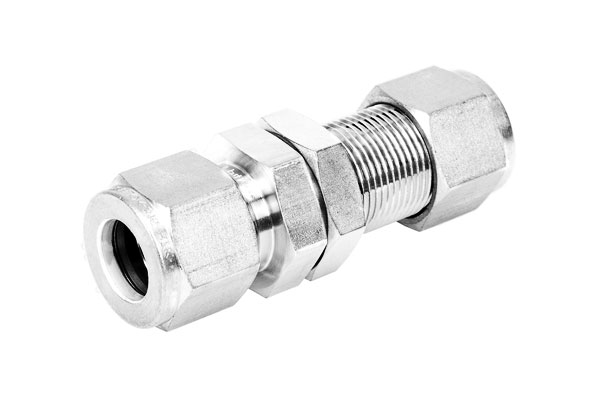
Key Mechanical Properties
| Property | Typical Value | Test Standard |
| Tensile Strength | ≥ 795 MPa (115 ksi) | ASTM A370, EN ISO 6892-1 |
| Yield Strength (0.2% offset) | ≥ 550 MPa (80 ksi) | ASTM A370 |
| Elongation (in 2 in./50 mm) | ≥ 15% | ASTM A370 |
| Hardness | ≤ 32 HRC (~290 HBW) | ASTM E18 / E10 |
| Impact Toughness (−50 °C) | > 100 J | ISO 148-1 / ASTM E23 |
| Modulus of Elasticity | ~200 GPa (29 x 10⁶ psi) | — |
| Fatigue Strength (Rotating Bending) | ~400 MPa (58 ksi) | — |
5. Corrosion Resistance of 2507 Super Duplex Stainless Steel
One of the defining features of 2507 Super Duplex Stainless Steel (UNS S32750) is its outstanding corrosion resistance,
particularly in harsh, chloride-rich, and acidic environments where standard stainless steels often fail.
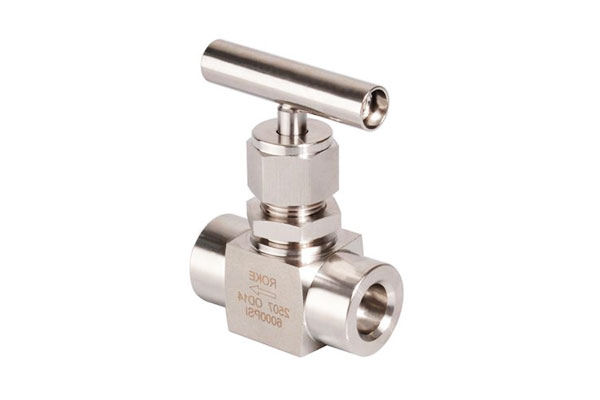
Pitting Resistance Equivalent Number (PREN)
The Pitting Resistance Equivalent Number (PREN) is a widely accepted index for evaluating localized corrosion resistance in stainless steels. It is calculated as:
PREN=%Cr+3.3×%Mo+16×%N
- Typical PREN for 2507: > 42
(Compared to ~25 for 316L and ~35 for 2205 duplex)
This very high PREN value places 2507 in the category of super duplex alloys, meaning it performs excellently in pitting and crevice corrosion environments, particularly where chlorides are present.
Resistance to Major Forms of Corrosion
| Type of Corrosion | 2507 Performance |
| Pitting Corrosion | Excellent due to high Cr, Mo, and N; PREN > 40 |
| Crevice Corrosion | Highly resistant; often used in flanged and gasketed joints in marine environments |
| Chloride Stress Corrosion Cracking (SCC) | Very high resistance up to ~300 ppm Cl⁻ at 150 °C; superior to austenitic grades |
| General (Uniform) Corrosion | Very low corrosion rate in acids, seawater, and brine |
| Erosion–Corrosion | Strong mechanical integrity resists fluid-borne particulates and cavitation effects |
| Intergranular Corrosion (IGC) | Immune when properly solution annealed and cooled rapidly |
| Galvanic Corrosion | Performs well when coupled with less noble metals, but care should be taken in design |
6. Fabrication and Welding of 2507 Super Duplex Stainless Steel
Fabricating and welding 2507 Super Duplex Stainless Steel (UNS S32750) requires careful attention to its unique microstructural balance and high-alloy composition.
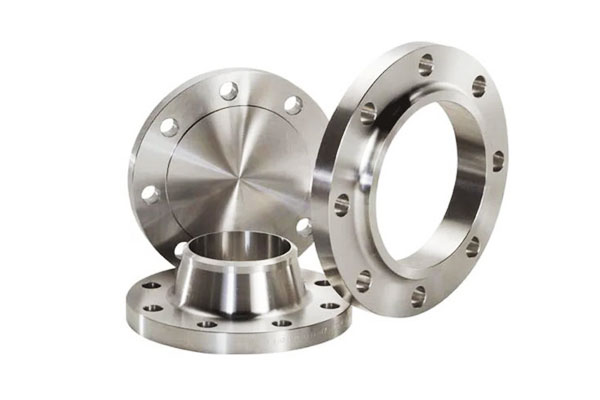
Melting and Casting
The production of 2507 Super Duplex Stainless Steel begins with melting high-purity raw materials such as iron, chromium, nickel, molybdenum, and nitrogen-bearing alloys in electric arc or induction furnaces.
Strict control over the melting process ensures accurate chemical composition and minimizes impurities.
Refining techniques like argon-oxygen decarburization (AOD) or vacuum oxygen decarburization (VOD) are used to reduce carbon and sulfur levels while enhancing alloy uniformity.
The molten alloy is then cast into ingots, billets, blooms, or slabs, either by static or continuous casting.
To prevent defects such as porosity, segregation, or shrinkage, the casting process must be carefully managed.
Cooling rates must be optimized to preserve the balanced duplex microstructure, as rapid cooling can suppress austenite formation and skew the ferrite-to-austenite ratio.
Workability and Machinability
2507 offers moderate hot workability, with recommended forming temperatures between 950–1150 °C (1742–2102 °F).
Hot-forming processes such as forging, rolling, and extrusion are effective but require careful thermal management to prevent grain coarsening.
Due to its high strength and work-hardening behavior, cold working is more demanding.
Operations like drawing, stamping, or cold rolling may necessitate intermediate annealing to restore ductility and reduce internal stresses.
Welding of 2507 Super Duplex Stainless Steel
Welding is a critical process that must preserve the duplex structure and avoid harmful intermetallic phases.
Guidelines
| Aspect | Best Practice |
| Filler Metal | Use matching filler (e.g., ER2594 or E2594) to preserve corrosion resistance |
| Shielding Gas | High-purity argon or argon with nitrogen (to stabilize austenite) |
| Preheat Temperature | Typically not required (avoid overheating) |
| Interpass Temperature | Keep below 100 °C (212 °F) to prevent sigma phase formation |
| Post-weld Heat Treatment | Not generally required; rapid cooling after welding is essential |
Welding Processes
- GTAW (TIG) – Common for root passes and small welds.
- GMAW (MIG) – Used for higher deposition rates.
- SMAW (Stick) – Suitable for field welding, using E2594 electrodes.
- SAW (Submerged Arc Welding) – For thick sections; requires control over heat input and flux composition.
Post-weld heat treatment and quality assurance
In some cases, post-weld heat treatment (PWHT) may be necessary, especially for thick-walled components or when high-quality welds are required.
PWHT, typically solution annealing, can help to relieve residual stresses, improve the microstructure of the heat-affected zone, and restore the corrosion resistance of the welded joint.
Quality assurance during welding involves non-destructive testing methods such as ultrasonic testing, radiographic testing, and liquid penetrant testing to detect any internal or surface defects in the welds.
Visual inspection is also carried out to ensure proper weld bead formation and surface quality.
7. Heat Treatment and Processing
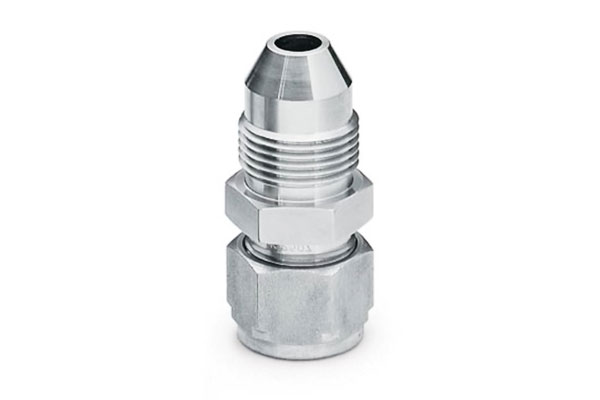
Solution Annealing Process
Solution annealing is a vital thermal treatment for 2507 Super Duplex Stainless Steel, designed to optimize its microstructure and performance.
The alloy is heated to 1020–1100 °C (1868–2012 °F) and held at temperature long enough, typically 30 minutes to several hours, depending on section thickness, to dissolve intermetallic phases (such as sigma or chi) and homogenize the distribution of alloying elements.
Following the soak period, the material must be rapidly cooled, most commonly by water quenching or forced air cooling.
This rapid cooling is essential to prevent the formation of detrimental phases and to restore the desired balanced duplex structure (approximately 50% ferrite and 50% austenite).
It also improves ductility, corrosion resistance, and overall mechanical properties.
Cooling Rates to Preserve Duplex Structure
Maintaining appropriate cooling rates is critical during heat treatment. Rapid quenching ensures the retention of a balanced austenite-ferrite microstructure, which underpins 2507’s superior performance.
- Slow cooling through the temperature range of 600–950 °C (1112–1742 °F) can result in precipitation of intermetallic compounds such as sigma (σ) or chi (χ) phases, which severely impair both toughness and corrosion resistance.
- Excess ferrite can lead to reduced resistance to stress corrosion cracking (SCC), while excess austenite may compromise strength and pitting resistance.
Therefore, controlled and rapid cooling is essential for structural integrity and service performance.
Hot and Cold Forming
Hot Forming
2507 can be effectively hot worked in the range of 950–1150 °C (1742–2102 °F).
At these elevated temperatures, the alloy exhibits improved ductility, allowing it to be forged, rolled, or formed into complex shapes.
- To avoid phase imbalance, it is crucial to avoid working below 900 °C (1652 °F).
- Post-forming, components should be solution annealed and rapidly cooled to restore corrosion resistance and microstructural balance.
Cold Forming
Although feasible, cold forming 2507 is more challenging due to its high strength and work-hardening rate.
It may be used for achieving tighter tolerances, better surface finishes, or for strain hardening. However:
- Specialized equipment is often required.
- Intermediate annealing may be necessary during multi-step operations to restore ductility and relieve internal stresses.
- Final solution annealing is recommended to ensure full corrosion resistance, especially in critical applications.
8. Equivalent Grades of 2507 Super Duplex Stainless Steel
| Standard / System | Grade / Designation | Notes |
| UNS (Unified Numbering System) | S32750 | Official UNS designation for 2507 Super Duplex |
| EN (European Norm) | 1.4410 / X2CrNiMoN25-7-4 | European equivalent; used in EN 10088 and pressure equipment directives |
| DIN (Germany) | X2CrNiMoN25-7-4 (W.Nr. 1.4410) | Same as EN, commonly used in German specifications |
| AFNOR (France) | Z3CN25-06Az | French equivalent, aligned with EN/DIN composition |
| BS (British Standard) | 2507 | Sometimes referred to simply as 2507 in UK standards |
| ASTM / ASME | A240 / A790 / A815 (for S32750) | Defines plate, pipe, and fittings respectively |
| ISO | 2507 / S32750 | Used in ISO 15156 / NACE MR0175 for sour service applications |
| JIS (Japan) | No direct JIS equivalent | Often substituted with imported 2507 / S32750 materials |
| NORSOK | MDS D55 / M630 | For offshore oil & gas components (Norwegian standards) |
9. Advantages and Limitations of 2507 Super Duplex Stainless Steel
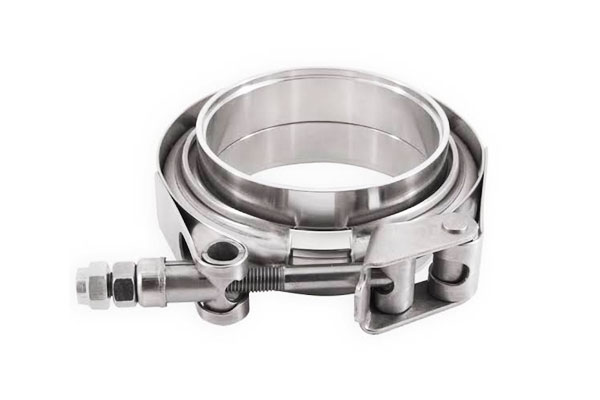
Advantages of 2507 Super Duplex Stainless Steel
Exceptional Corrosion Resistance
- With high chromium (25%), molybdenum (4%), and nitrogen (0.3%) content, 2507 offers outstanding resistance to pitting, crevice corrosion, and chloride stress corrosion cracking (SCC).
- It has a PREN (Pitting Resistance Equivalent Number) greater than 42, significantly outperforming 316L and 2205.
Superior Mechanical Strength
- 2507 delivers twice the yield strength of conventional austenitic stainless steels such as 304 and 316.
- Enables lighter wall thicknesses and structural weight reduction in pressure systems.
Excellent Fatigue and Impact Resistance
- The duplex microstructure ensures high toughness and fatigue resistance, even under cyclic or dynamic stress—crucial in offshore and subsea systems.
Cost Efficiency in High-Performance Applications
- Despite a higher initial price, 2507 offers longer service life, reduced maintenance, and lower material usage, providing excellent life-cycle cost efficiency.
Weldability and Fabrication Compatibility
- Though more complex to process than standard grades, 2507 can be welded safely and is suitable for hot forming, machining, and heat treatment.
High Pressure & Temperature Capability
- Maintains reliable performance in thermally and mechanically demanding applications such as heat exchangers, desalination systems, and pressure vessels.
Limitations of 2507 Super Duplex Stainless Steel
Difficult Machinability
- Due to its high strength and work-hardening nature, machining requires special tooling, lower cutting speeds, and ample cooling.
Welding Sensitivity
- Improper welding may lead to the formation of intermetallic phases (e.g., sigma phase), degrading both mechanical and corrosion performance.
- Requires strict control of welding temperature and correct filler metals.
High Initial Material Cost
- The use of alloying elements like Cr, Mo, and Ni raises the base material cost compared to common austenitic grades.
Limited Low-Temperature Ductility
- While better than ferritic grades, 2507 shows reduced ductility below -50°C, making it unsuitable for cryogenic service.
Not for Highly Reducing Acids
- The alloy is not resistant to strongly reducing acids such as pure hydrochloric or sulfuric acid.
Special Handling Requirements
- To maintain corrosion resistance, care must be taken to avoid contamination from carbon steel particles or chloride exposure during handling and storage.
10. Applications of 2507 Super Duplex Stainless Steel
2507 Super Duplex Stainless Steel is widely used across various industries where its superior mechanical properties and excellent corrosion resistance provide significant advantages.
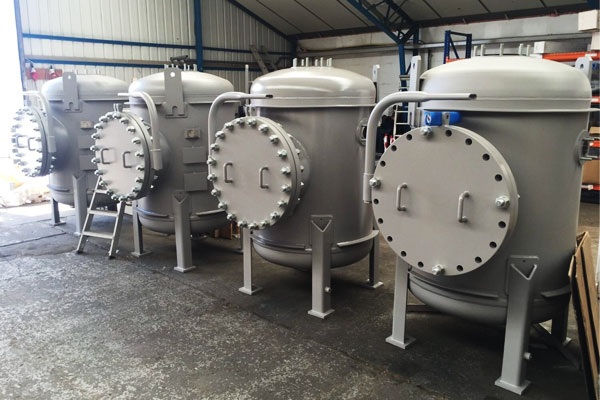
Application Fields
Oil & Gas Industry
Offshore platforms, subsea pipelines, risers, and processing equipment where high strength and corrosion resistance are critical.
Chemical and Petrochemical Industry
Reactors, heat exchangers, and storage tanks exposed to aggressive chemicals and chloride-containing environments.
Desalination Plants
Components in reverse osmosis systems and seawater intake structures due to excellent resistance to seawater corrosion.
Marine Engineering
Shipbuilding, offshore structures, and seawater handling systems requiring durability against saltwater corrosion.
Pulp and Paper Industry
Equipment exposed to corrosive process chemicals and elevated temperatures.
Power Generation
Boilers, heat exchangers, and cooling systems operating under harsh conditions.
Structural Engineering
Bridges and buildings in corrosive environments requiring high strength and durability.
Typical Application Components
- Valves (gate, globe, ball, check valves)
- Pumps and pump shafts
- Heat exchangers and condensers
- Pressure vessels and piping systems
- Flanges, fittings, and fasteners
- Subsea equipment and risers
- Reactor vessels and storage tanks
- Desalination membranes and filtration units
11. Comparison with Other Stainless Steels
| Property / Feature | 2507 Super Duplex Stainless Steel | 304 Stainless Steel | 316 Stainless Steel | 2205 Duplex Stainless Steel | 904L Austenitic Stainless Steel |
| Chemical Composition | ~25-26% Cr, 6-7% Ni, 3-4% Mo, 0.2-0.3% N | ~18-20% Cr, 8-10.5% Ni, low Mo | ~16-18% Cr, 10-14% Ni, 2-3% Mo | ~22% Cr, 5-6% Ni, 3% Mo, 0.14% N | ~20% Cr, 25% Ni, 4-5% Mo |
| Microstructure | Duplex (ferrite + austenite) | Austenitic | Austenitic | Duplex | Austenitic |
| Tensile Strength (MPa) | 750-850 | ~520 | ~520 | 620-750 | ~600-700 |
| Yield Strength (MPa) | ~550-700 | ~210 | ~290 | 450-550 | ~300-400 |
| Corrosion Resistance | Excellent (PREN > 40) | Moderate | Good | Very good (PREN ~35) | Excellent (especially oxidizing media) |
| Resistance to Chloride SCC | High | Low | Moderate | High | High |
| Temperature Range | Up to 300-350°C | Up to 870°C | Up to 870°C | Up to 300°C | Up to 400°C |
| Fabrication & Welding | Moderate (special care needed) | Excellent | Excellent | Moderate | Moderate |
| Cost | High | Low | Moderate | Moderate | Very High |
| Typical Applications | Harsh chemical, marine, oil & gas | Food processing, general corrosion environments | Marine, chemical processing | Oil & gas, chemical industries | Highly corrosive chemical environments |
Summary:
- 2507 Super Duplex Stainless Steel offers superior strength and corrosion resistance compared to standard austenitic grades (304, 316), especially in chloride-rich environments.
It is ideal for demanding industrial applications where both mechanical performance and corrosion resistance are critical. - Compared to 2205 Duplex, 2507 provides enhanced corrosion resistance due to higher chromium, molybdenum, and nitrogen content, but at a higher cost.
- 904L Stainless Steel excels in highly oxidizing and acidic environments but is more expensive and generally lower in strength compared to 2507.
- 304 and 316 Stainless Steel are more cost-effective for less aggressive environments but lack the high strength and SCC resistance of 2507.
12. Conclusion
2507 Super Duplex Stainless Steel stands at the intersection of mechanical superiority, corrosion resistance, and service life reliability.
It is engineered for the most demanding industries where chloride-rich, acidic, or high-pressure conditions prevail.
Despite its higher cost compared to conventional stainless steels, 2507’s long-term reliability and reduced maintenance requirements often justify the investment, especially in critical and extreme service conditions.
For industries requiring a material that can withstand harsh chemical exposure, high mechanical loads, and corrosive environments, 2507 Super Duplex Stainless Steel remains a highly recommended and trusted choice.
LangHe: Precision Stainless Steel Casting & Fabrication Services
LangHe is a trusted provider of high-quality stainless steel casting and precision metal fabrication services, serving industries where performance, durability, and corrosion resistance are critical.
With advanced production capabilities and a commitment to engineering excellence, LangHe delivers reliable, customized stainless steel solutions to meet the most demanding application requirements.
Our Stainless Steel Capabilities Include:
- Investment Casting & Lost Wax Casting
High-precision casting for complex geometries, ensuring tight tolerances and superior surface finishes. - Sand Casting & Shell Molding
Ideal for larger components and cost-effective production, especially for industrial and structural parts. - CNC Machining & Post-Processing
Complete machining services including turning, milling, drilling, polishing, and surface treatments.
Whether you need high-precision components, complex stainless assemblies, or custom-engineered parts, LangHe is your dependable partner in stainless steel manufacturing.
Contact us today to learn how LangHe can deliver stainless steel solutions with the performance, reliability, and precision your industry demands.
FAQs
What is the difference between super duplex 2205 and 2507?
The main difference lies in their chemical composition and performance: 2507 has higher chromium, molybdenum, and nitrogen levels than 2205,
resulting in greater corrosion resistance (especially against chloride stress corrosion cracking) and higher mechanical strength.
2507 is considered a more premium, higher-performance alloy than 2205.
What is equivalent to Super Duplex 2507?
Materials equivalent to super duplex 2507 include UNS S32750 and ASTM A240 Type 2507.
In commercial terms, it corresponds to grades like SAF 2507 by Sandvik, X2CrNiMoN25-7-4 in EN standards, and Zeron 100 in proprietary alloys.
What is SAF 2507 material?
SAF 2507 is the commercial name for super duplex stainless steel 2507 produced by Sandvik Materials Technology.
It has the same chemical composition and properties as standard 2507 and is widely used for applications requiring high corrosion resistance and strength.


